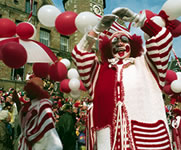
This region is bordered by the Neckar valley to the south and the Bergstrasse to the west. At its heart are the Odenwald hills and their highest elevation Mount Katzenbuckel (628 metres). After the Rhineland plain comes the Lower Odenwald with its deciduous forests, gentle valleys and hilly formations of granite and other crystalline rocks. The Upper Odenwald to the south is characterised by extended plateaux, dark forests and ravine-like valleys. In the east, where the red sandstone gives way to Triassic limestone, is the Bauland. It is a very agricultural area, and its name means "farmland".
Hilly vineyards are a feature of the valleys of the Main and the Tauber. The strip of land between the Rhine plains and the steeply rising Odenwald hills is known as the "Bergstrasse" (mountain road). It is an ancient trading route, known to the Romans as strata montana, and it is now a UNESCO World Cultural Heritage Site.

To the delight of visitors, this region enjoys an early spring, a long summer and a golden autumn whose palette of brilliant colours lasts well into November. Early in the year, the north of the Bergstrasse region - where a great deal of fruit is grown - is a sea of blossom. The gentle hills in the south of the region are lined by row upon row of vines whose grapes produce wonderful wines, including late vintages (Spätlese, Eiswein) and sparkling wine (Sekt).
On the Odenwald's western slopes there are traces of history going back more than 2,000 years. Castles, palaces, medieval manor houses, ancient timber-framed buildings, proud town halls and twisting narrow streets in a string of quaint towns and villages all tell of the region's turbulent past. The very earliest chapters in the Bergstrasse's history were written by Celts, Romans, Franks and Germanic and Alemannic peoples. You must have heard about the Nibelungen saga and the tales of Siegfried and Kriemhild, the dragon, Brunhild and Hagen.



